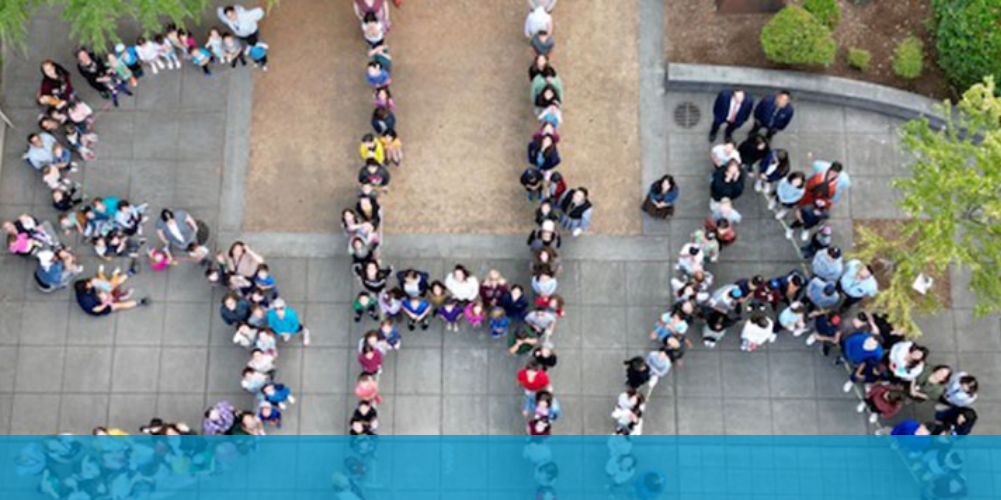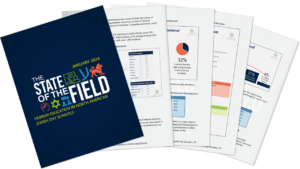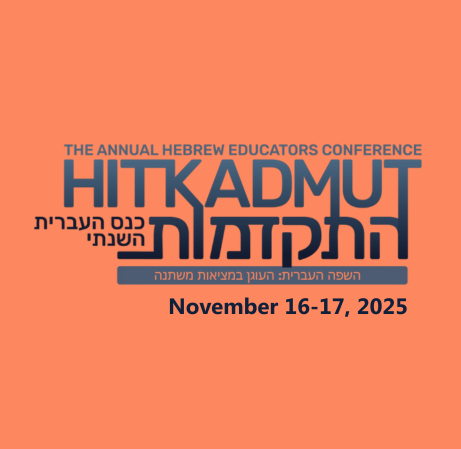 The Pacific Northwest is a vast geographical region, with pockets of thriving Jewish life. Each of the twelve Jewish day schools and Yeshivot, located in the major cities of Oregon, Washington State, and Vancouver are distinctive. What works at one school might not apply at another school, yet all are working to strengthen their Hebrew language programs as members of Hebrew at the Center’s Cascadia Project, thanks to the wisdom and generosity of funders who appreciated the value of this community-wide Hebrew language initiative. Each of these twelve schools learn together at regional conferences, and then take home and apply what they have learned, as they see fit. Each pursues one-on-one coaching to deepen the facet of the Hebrew Language Competencies Framework that resonate for their school. Each has a unique story to tell.
The Pacific Northwest is a vast geographical region, with pockets of thriving Jewish life. Each of the twelve Jewish day schools and Yeshivot, located in the major cities of Oregon, Washington State, and Vancouver are distinctive. What works at one school might not apply at another school, yet all are working to strengthen their Hebrew language programs as members of Hebrew at the Center’s Cascadia Project, thanks to the wisdom and generosity of funders who appreciated the value of this community-wide Hebrew language initiative. Each of these twelve schools learn together at regional conferences, and then take home and apply what they have learned, as they see fit. Each pursues one-on-one coaching to deepen the facet of the Hebrew Language Competencies Framework that resonate for their school. Each has a unique story to tell.
Earlier this year we shared stories from The Richmond Jewish Day School (Vancouver) and Portland Jewish Academy. Today we shine the spotlight on the Seattle Hebrew Academy, aka SHA, and their journey to improve Hebrew reading skills.
If you are an American of – ahem – a certain age, you will remember public service television commercials with the tag link, “Reading is Fundamental.” As it turns out, this is true in Hebrew just as much as in English. Creative ideas, personal choice, and project-based language learning can only take a student so far if they have not mastered the fundamentals of reading at a very young age. Thus concluded Rabbi Weiss, Director of Judaic Studies at SHA, an Orthodox yeshiva serving Early Childhood through 8th grade. Reading formed the starting point of Rabbi Weiss’ project to (re)build a 4-skills scope and sequence for Hebrew language, across the elementary and middle schools. By middle school, veteran teachers recognized that their students were no longer able to reach the goals that had been met by a previous generation of students, and it became clear to Rabbi Weiss that the reason was that too many students had not mastered Hebrew reading in the lower elementary grades. This, he believes, leads to wider and wider learning gaps as children matriculate from grade to grade.
Rabbi Weiss understood that the necessary partner to “goal setting” is “assessment.” Goal setting and assessment sandwich curriculum and instruction. How else to know if you have met your short-term goals before moving on to the next short-term, incremental goal? Yet in Jewish day schools and yeshivot, with dual curriculum and such limited time, curriculum and instruction often take place in the absence of either goal setting or assessment.
SHA does value the importance of assessment and had long been using its own, home-grown benchmarks for Kriyah in grades K-5. They recently moved to using MaDYK, an early reading assessment designed to quickly and easily assess and monitor individual students’ Hebrew reading skills, developed by Dr. Scott Goldberg, professor at the Azrieli Graduate School of Jewish Education at Yeshiva University in New York City. Once students’ reading was assessed with MaDYK and teachers began learning what the implication of the results SHA decided to pilot EVEN KRIYAH, Dr. Goldberg’s approach to teaching reading, with a strong emphasis on phonemic awareness. Rabbi Weiss has seen significant growth in grades K and 1 as a result. One of the next steps on the Hebrew teachers’ professional learning journey will be for lower school Hebrew teachers and reading specialists at SHA to be trained in the Orton-Gillingham method of Hebrew reading and decoding to be able to better serve students with learning challenges.
However, significant growth can only be achieved through effort, and effort requires many ingredients, including motivation and time to practice. To meet the goals for improved Hebrew reading, the parents at SHA had to be brought on board, which Rabbi Weiss and the teachers did by (re)introducing at-home daily reading in Hebrew. For quite a few years, this was not part of the culture of the school, as over the years there was a move away from Hebrew reading homework. To meet their revitalized goals, this cultural norm had to change.
Today, the SHA Kriyah Program begins with 5 minutes of at-home reading in the lower grades and increases in the upper grades. Five years ago, when the SHA Kriyah Program was rolled out, prizes were awarded as incentives. Once the real gains were recognized by students and parents, the prizes were no longer necessary. Success became its own reward. Reading became fundamental.
The SHA parents support the program. Students are reading at home. Some teachers have students use Google Voice to record themselves while reading at home, while other teachers prefer having parents sign a reading log. No matter the method, oral Hebrew reading at home is a fundamental part of the teacher-student-parent partnership and SHA culture of rigor and excellence. With that cultural shift in place and on course, Rabbi Weiss and his team continues their work on building the K-8, 4-skill scope and sequence with all its complexities with the support of Hebrew at the Center. Hebrew at the Center is proud of the achievements at the Seattle Hebrew Academy and looks forward to continuing this journey in 5785 during Year Two of the Cascadia Project.



